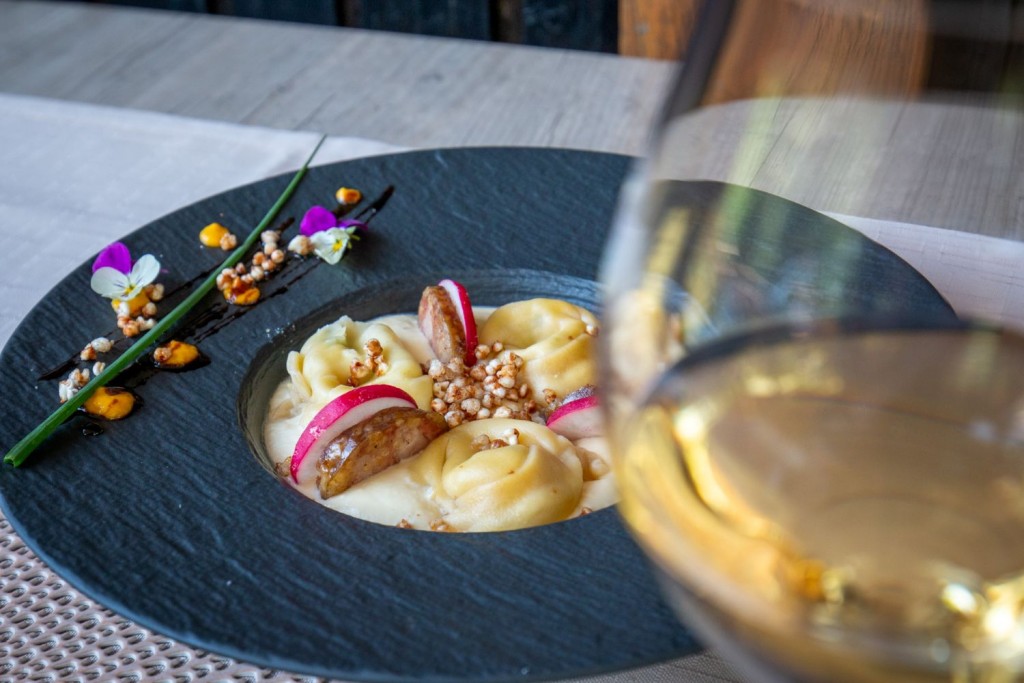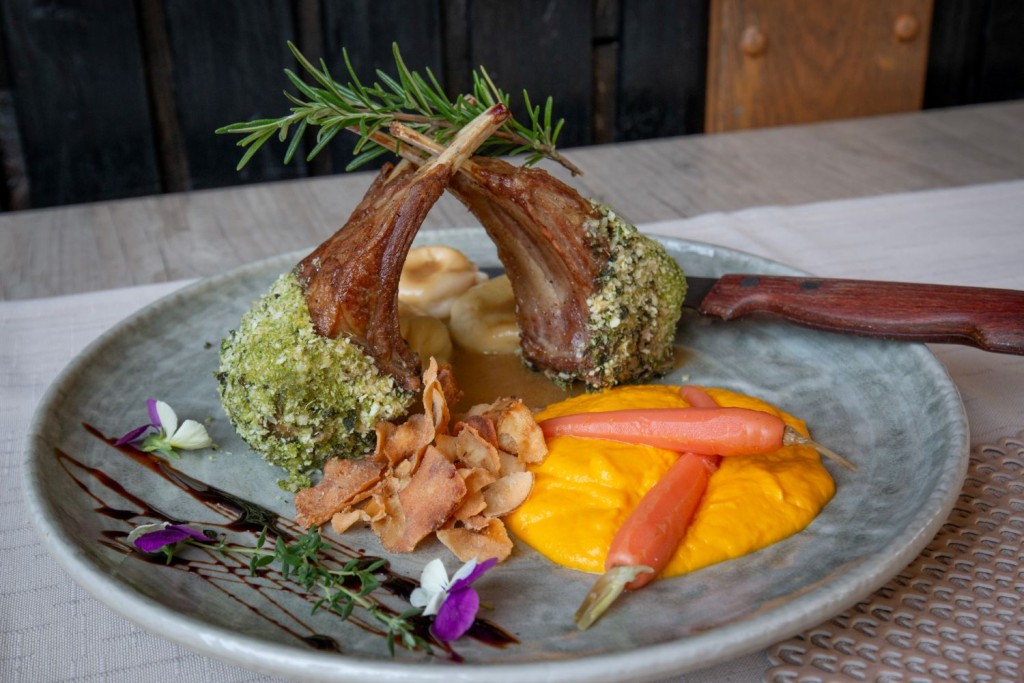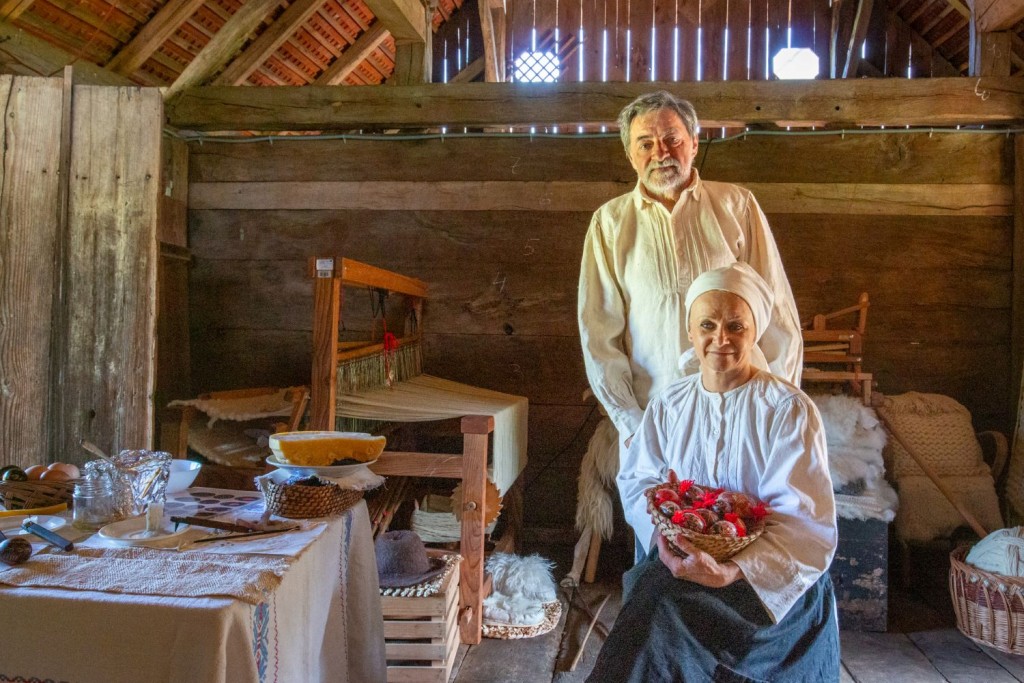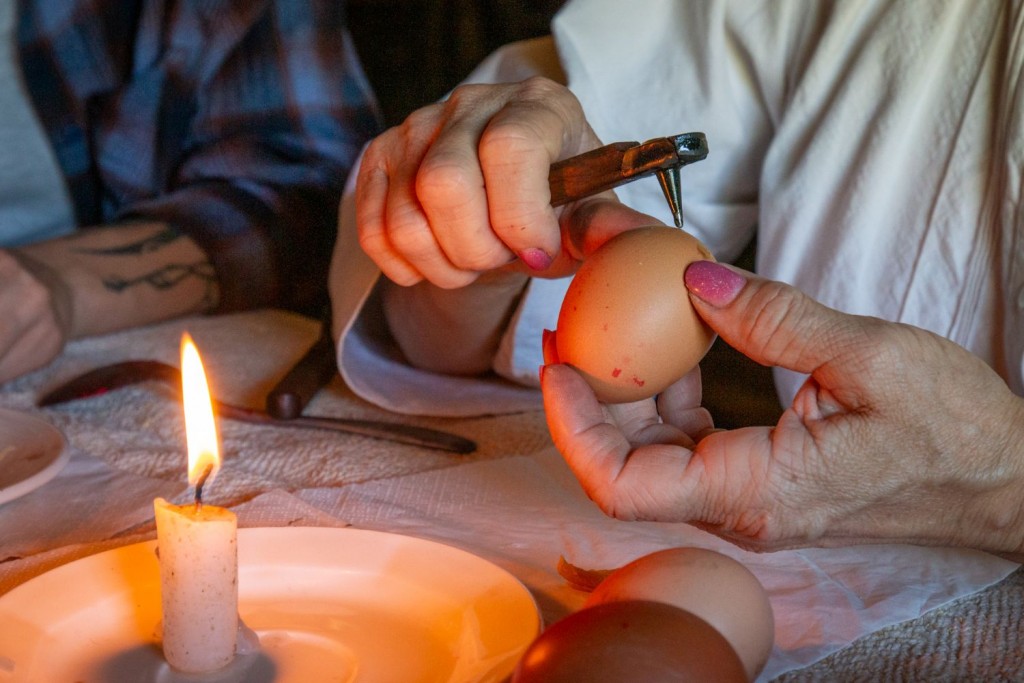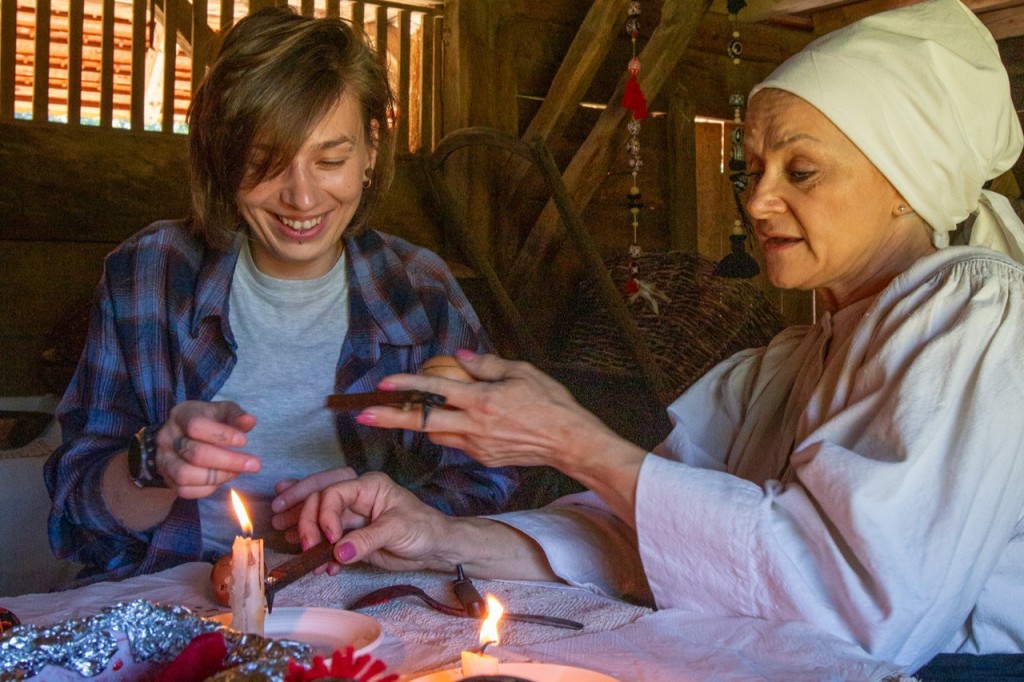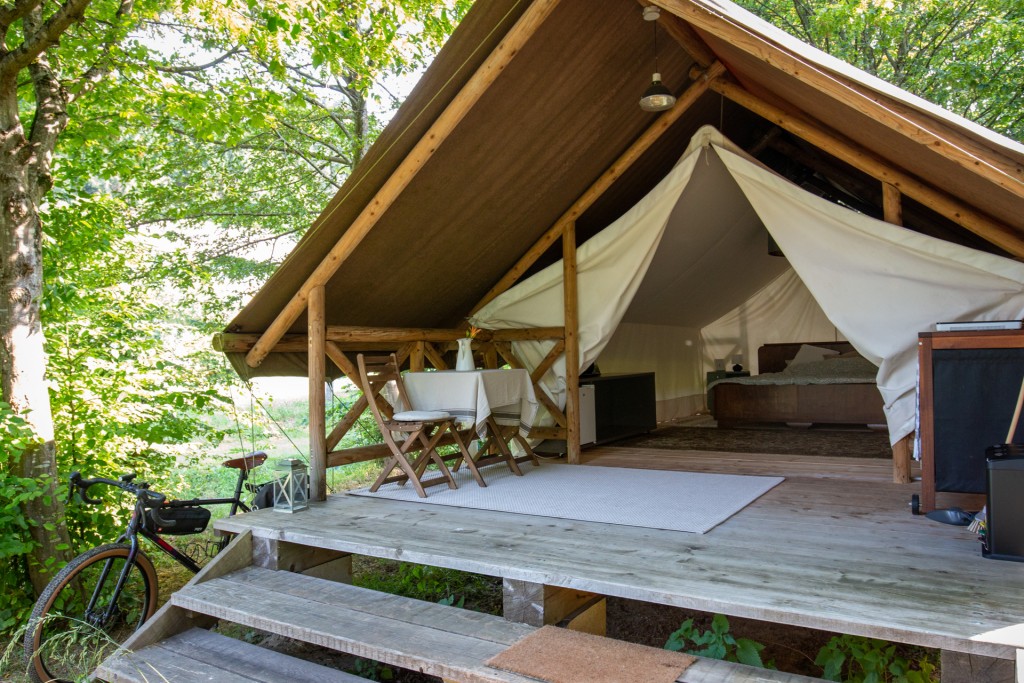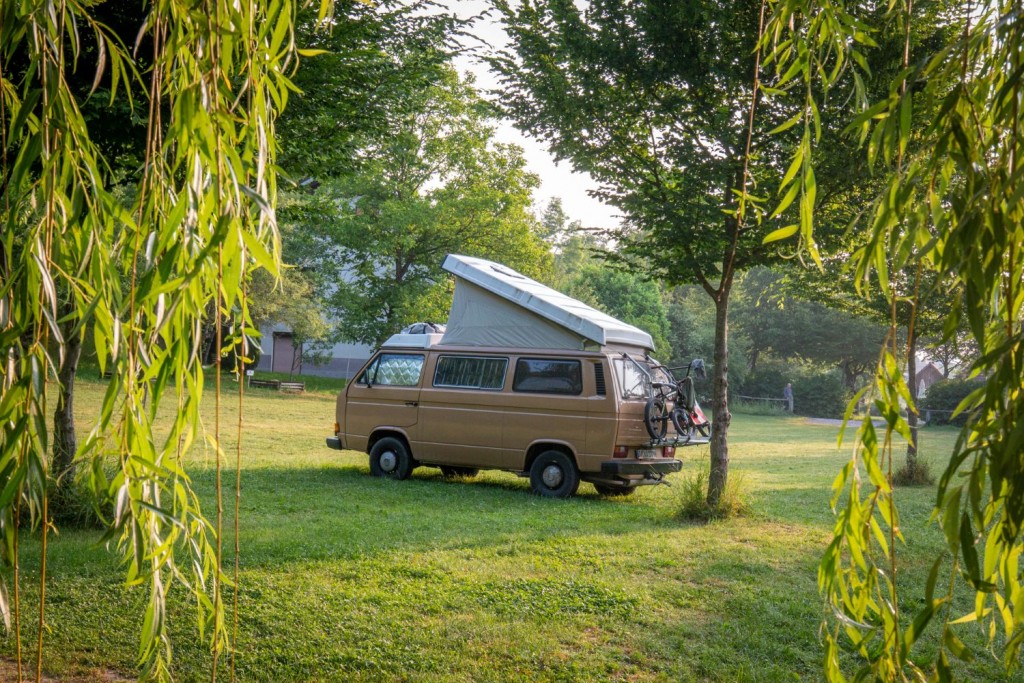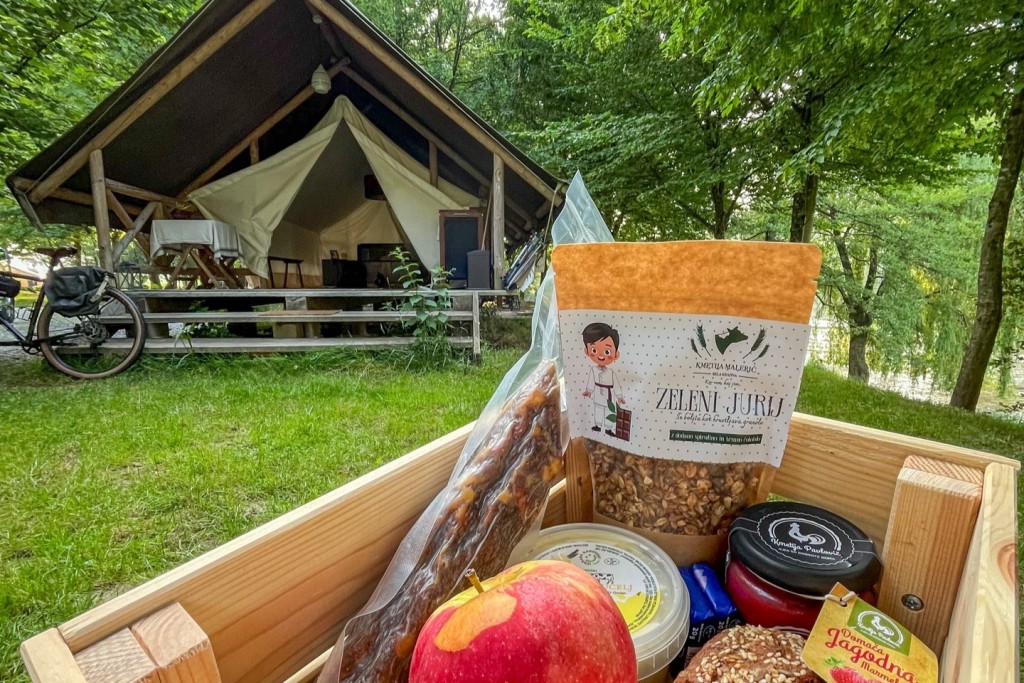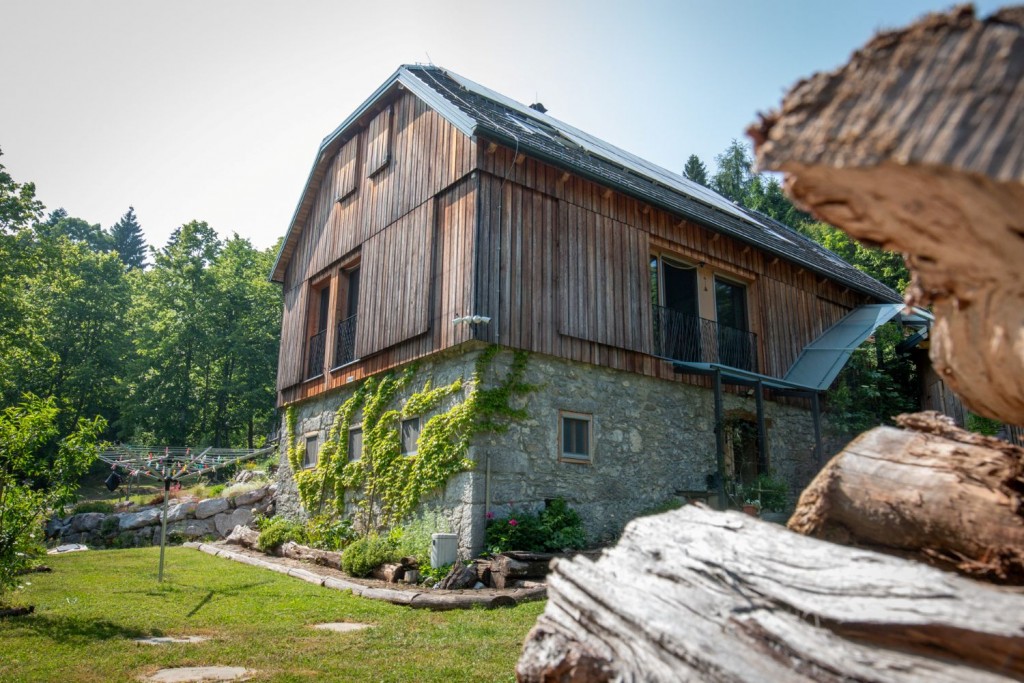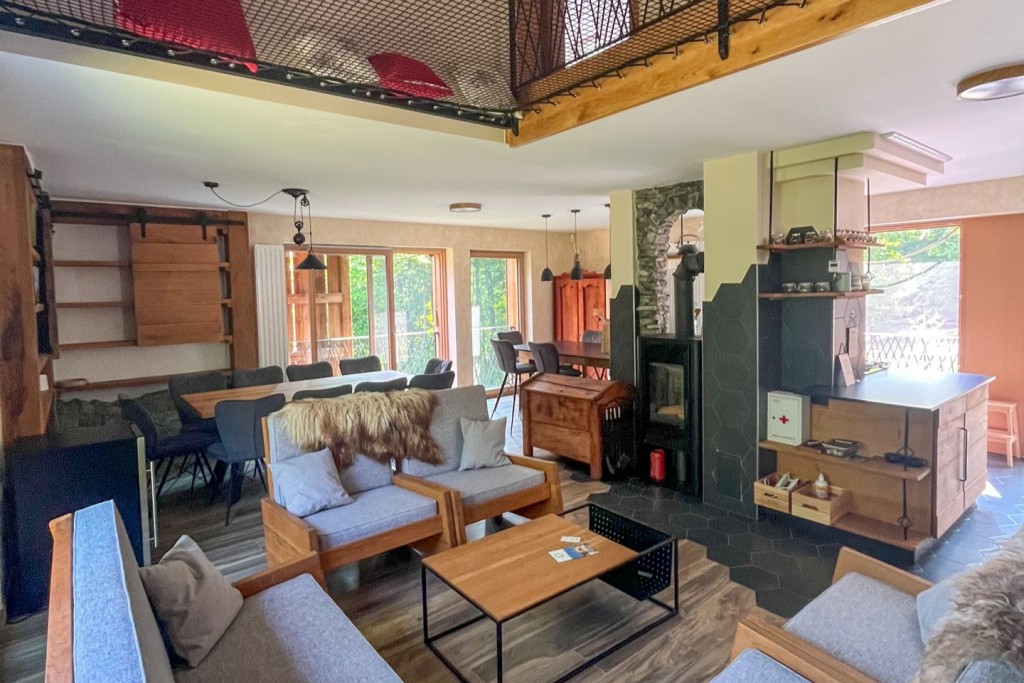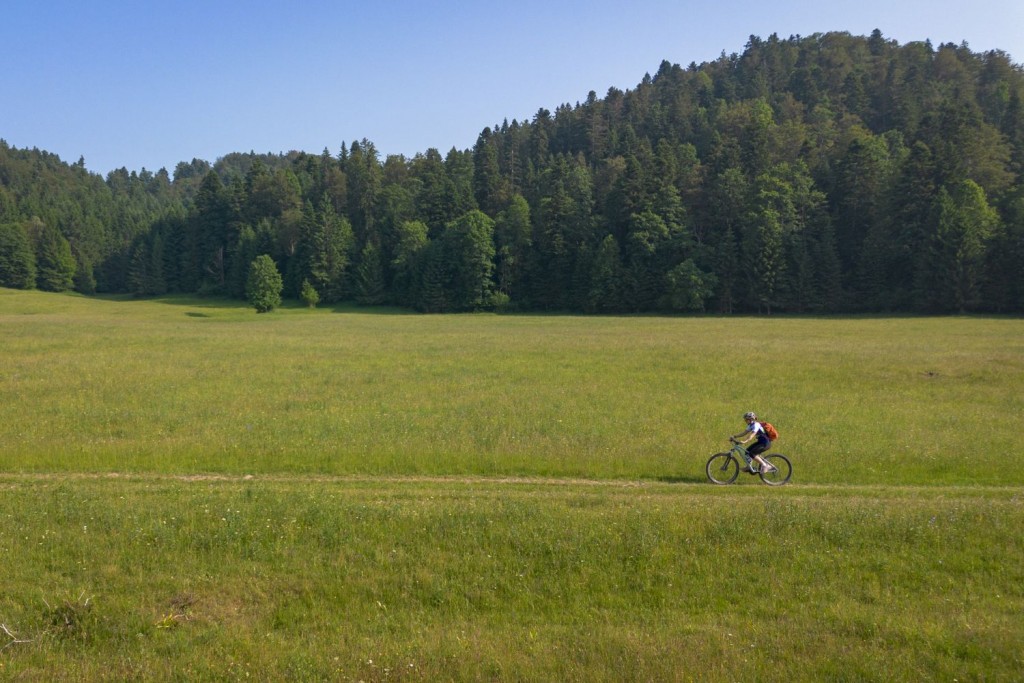48 sustainable hours in Bela Krajina: ideas for a relaxing and delicious cycling trip along the Kolpa River
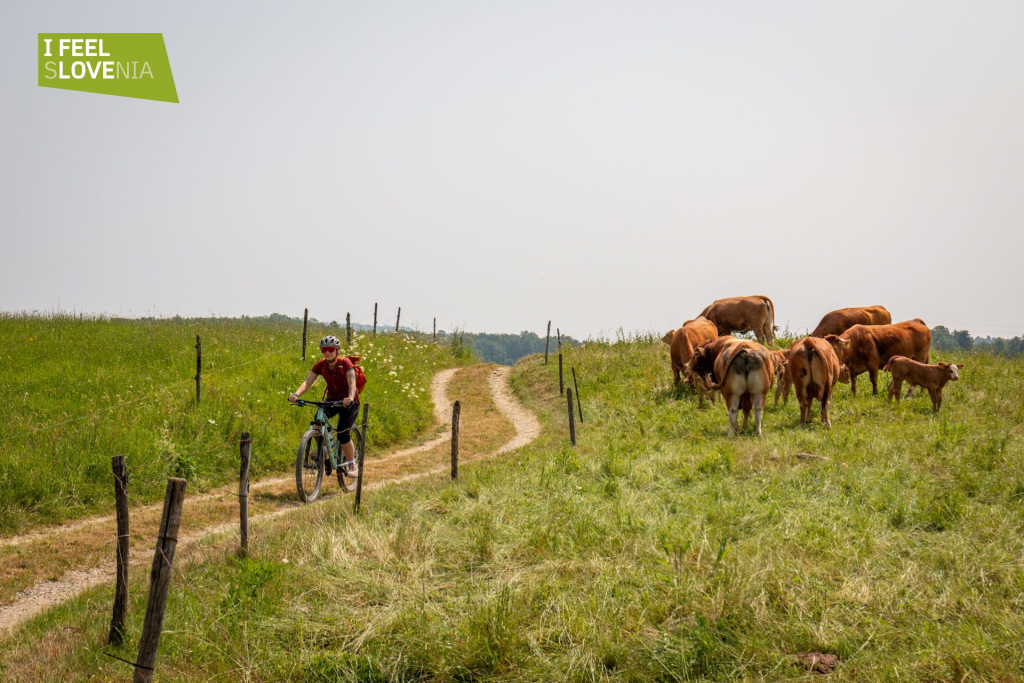
Bela Krajina is a lesser-known and less-visited region in Slovenia. But that is precisely what makes it an attractive place to relax. Let our trip to the campsites along the Kolpa River, the Lahinja Landscape Park, the source of the Krupa River and all the way to the slopes of Kočevski Rog, a vast forested plateau, inspire you to plan your own.
As we heard from locals involved in tourism, Bela Krajina may not have a dedicated cycling infrastructure – that is, cycling paths – but due to the scattered nature of the terrain with smaller towns and villages and many little-used roads and paths in between, it is still a truly wonderful region for cycling. My colleague Monja and I visited a few spots that can help you plan your own cycling holiday in southern Slovenia. Take your time – and enjoy!
Dry Karst and Water (and Us)
How many times have I driven past the sign ‘Lahinja Landscape Park’ on the way to the Vinica border crossing, but always with a completely different goal in mind, so I put off visiting until… Until recently. In the village of Veliki Nerajec, Gregor Šmaljcel, coordinator of the Lahinja Landscape Park, describes the Dry Karst and Water experience, an experience that aims to rise interest and respect for fragile nature and, through activity (not to say work), open and relax participants. They must collect firewood on a walk, carry water with a bucket, make tea and cut bread and salami. “All this seems completely simple, but people are so alienated from nature that these tasks are not familiar to them. When they make an effort, they appreciate the result more, they relax and open up in nature,” explains Gregor.
It’s interesting how people then connect with nature. At some point, everyone must choose their own tree, and a smaller participant subconsciously chooses a smaller, more foraging tree, a tree that had to work harder for its existence. We walked through ‘Nerajski lugi’, past the well where villagers used to go for water not so long ago, and along wooden paths past a swampy field to the bird observatory. The area is inhabited by herons, storks and other birds that love healthy nature without intensive agriculture. If you have enough time to wait for the birds, take binoculars!
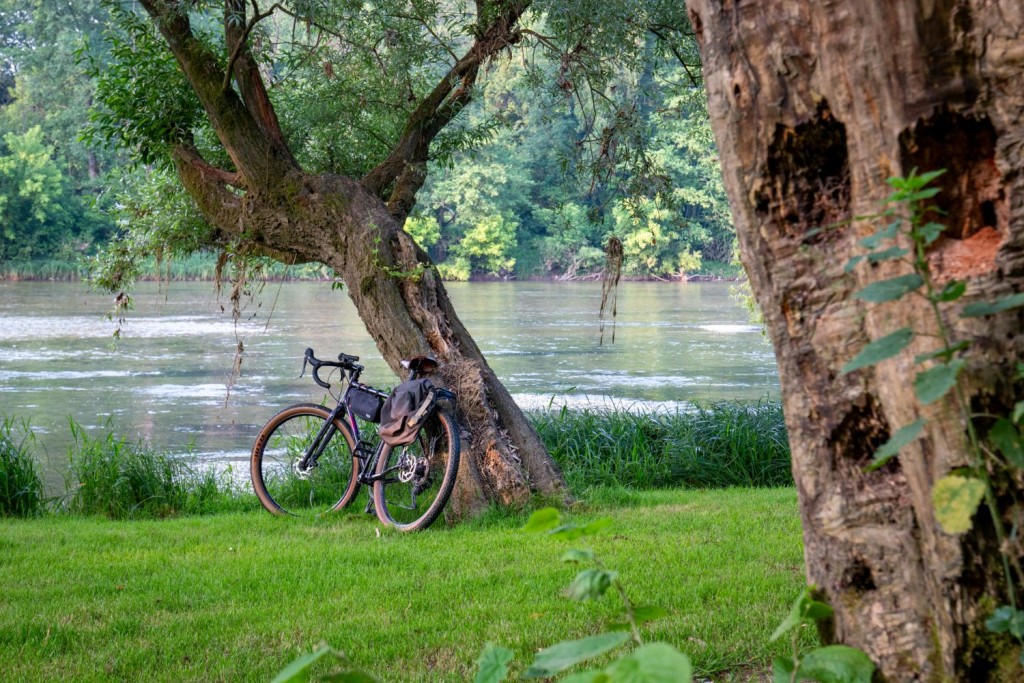
Bela Krajina, with the Kolpa River, cycling trails and the Lahinja Landscape Park, offers plenty of ways to spend an active weekend in nature.
Homemade is healthy. And delicious.
Nine kilometers north, we refresh ourselves at the Muller restaurant, a holder of the Slovenia Green environmental label and a provider of several certified dishes of the Territorial Collective Brand (TKBZ) Bela Krajina. We wanted something local, and our waiter just smiled and dished out a series of dishes made from ingredients from local breeders and farmers. Their menu doesn’t start with a starter menu, but with a list of 15 local suppliers, farms, small livestock farmers and fish farms.
We started with a smoked trout spread with horseradish, hazelnuts and berries, celery, tompinabur chips and pickled wild garlic flowers, and continued with homemade ‘žlikrofi’ in cheese cream with wheat sausage and buckwheat porridge popcorn and radish. The herb-crusted lamb chops, ‘žlikrofi’ and carrot puree were mouth-watering, and our stomachs were so full that we left dessert – fried ice cream was tempting – for another time.
- Smoked trout spread
- Žlikrofi (dumplings)
- Lamb cutlets
“This egg is given for love”
Our next hosts are Tončka Jankovič and Boris Grabrijan, both artisans and caretakers of local tradition and culture. After serving lunch to a group of playful schoolchildren at the Stari pod Jankovič campsite, Tončka teaches us how to make Bela Krajina Easter eggs. To make them, you need a blown-out egg, usually a chicken egg, but it can also be a duck or goose egg, a pen, beeswax, a candle and dyes – in Bela Krajina they are dyed black and red. Initially, making them was associated with Easter customs, but they could also be made just like that, as a souvenir. Or girls would give them to boys as a sign of love – with the inscription ‘this egg is given for love’, for example. When we ask Tončka how many people still master the technique of making Easter eggs, she thinks for a moment and starts listing: “Slavica, Anica, Vesna, and Martina… And the Cvitkovičs… about ten in total.” In short, not very many anymore.
If you would like to try your hand at drawing with hot wax on eggshells, you can become a Bela Krajina master yourself in a three-hour workshop. Or you can relax at the campsite and guess which way the slow Kolpa River flows. Namely, in this section it flows north before later turning east at Podzemelj. Podzemelj? Another point worth stopping at…
- Keeping traditions alive in Bela Krajina The ever-hospitable Tončka and Boris – artisans and guardians of local heritage and culture.
- Traditional pisanica (hand-decorated Easter egg) in Bela Krajina.
- Maybe we’ll give it a try at home for Easter?
Campsite for families with children (and dogs too)
From Adlešiči, you can stay right on the ‘main’ road, which takes you past Rima, through Fučkovci and Griblje to Podzemelj and Camping Bela krajina. When visiting it, you will quickly understand who is welcome. Numerous wooden playgrounds, climbing frames, sandpits, wooden houses in the shade of lush, old trees will keep children busy for hours, and dog owners are also welcome at the campsite – they have even dedicated a special beach, water bowls, a dog shower and even a small agility park with various obstacles for their four-legged friends to have fun. Cyclists are also regular guests of the campsite. The location is ideal for exploring Bela Krajina, it is approximately the same distance to Črnomelj, Semič and Metlika.
One of the most beautiful experiences is cycling up the Kolpa River and then descending by boat back to Podzemelj. And there is something else that is cyclist-friendly: the climate. The weather forecast was bad that day, but it’s warm and sunny along the Kolpa. “We are often saved from bad weather by the Gorjanci,” says camp manager Petra Pešelj. “Oh, how many Slovenian guests get scared by the bad weather forecast and cancel their visit, but then we have the sun all weekend.”
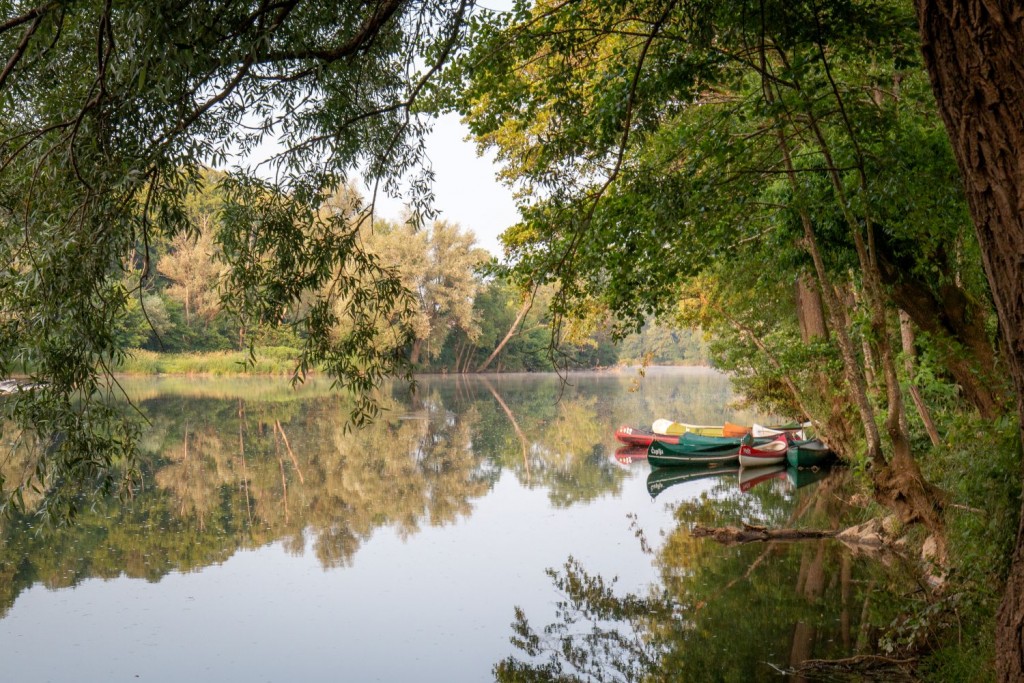
Rafting down the Kolpa River was one of our favorite activities during the 48 hours we spent there.
Dreaming with the sounds of Kolpa and frogs
We spent the night a little further down the Kolpa, on the Lovšin estate, which also holds the Slovenia Green certificate. In addition to 20 places for trailers, 20 units for motorhomes and the same amount of space for tents, they also have two large and comfortable permanent glamping tents. “You don’t mind if it’s a little noisy at night, do you?” asks Luka Lovšin when ‘moving in’. “One lady from Germany once asked if we could turn down the noise of the Kolpa, and another one said in the morning that the frogs bothered her.” His father started the camp, of course on a smaller and simpler scale, back in 1992.
From my own experience, I can say that, protected by a mosquito net, accompanied by the sound of frogs and the sound of the river, I slept like a log. For breakfast, we were greeted by wooden boxes with local ingredients, one with ‘classic’ dishes, the other with vegan dishes (homemade vegan cheese, homemade flakes from the Klepec farm…), both excellent, both so full that there was still enough left for a snack.
- A one-night lullaby: the soothing Kolpa River.
- There’s plenty of space here for motorhomes, too.
- In the morning we’re greeted by a wooden crate breakfast, packed with local goodies.
To the ‘Vinomerski steljniki’ (what?!) and the most beautiful spring in Slovenia
Although the route led us back west, it was worth driving three kilometers from Metlika to the ‘steljniki’, birch forest with bracken undergrowth, which was once used as bedding for animals. To preserve this beautiful (green-white) landscape, they must be mowed at least once a year. The ‘Vinomerski steljniki’ (in the photo) and the Marindolski steljniki are well preserved and have the status of a natural value and a natural and cultural monument.
At least as much as the romantic forests, Bela Krajina is proud of the source of the Krupa River, which they claim is the most beautiful source in Slovenia. And the scene near Semič, below the village of Krupa, is truly magnificent: under the vertical 30-meter-high white walls is a seven-meter-deep lake, which flows a little lower over a small waterfall. Worth a visit, preferably longer than a few minutes. The car park is two hundred meters north of the source.
Why is Bela Krajina white?
After refreshments at the Smuk Hotel in Semič (try the ‘šurlice’, local pasta from the Klepec farm, with wild garlic pesto), we visit to the Semič Museum House. It has three permanent exhibitions, the Bela Krajina Nature Center, the Semič local collection in twenty paintings, the wine collection and a presentation of the cave mussel Jalzić’s conger, a mysterious creature of the Semič underground. As the director, Dr. Jaka Jarc, said, they especially want young people to visit. “We want to educate them about the importance of protecting nature. Children are the ones who will be able to protect our greatest treasure.”
And when we thought we would finally get the answer to why Bela Krajina is white (‘bela’ means white) – because of the birches or the national costumes, Tanja Prešeren Banovec smiled and disappointed us that the answer was not unambiguous. Bela Krajina is white because of both, because of the white birches, white national costumes made of linen, and because of the white limestone that dominates the stony karst surface.
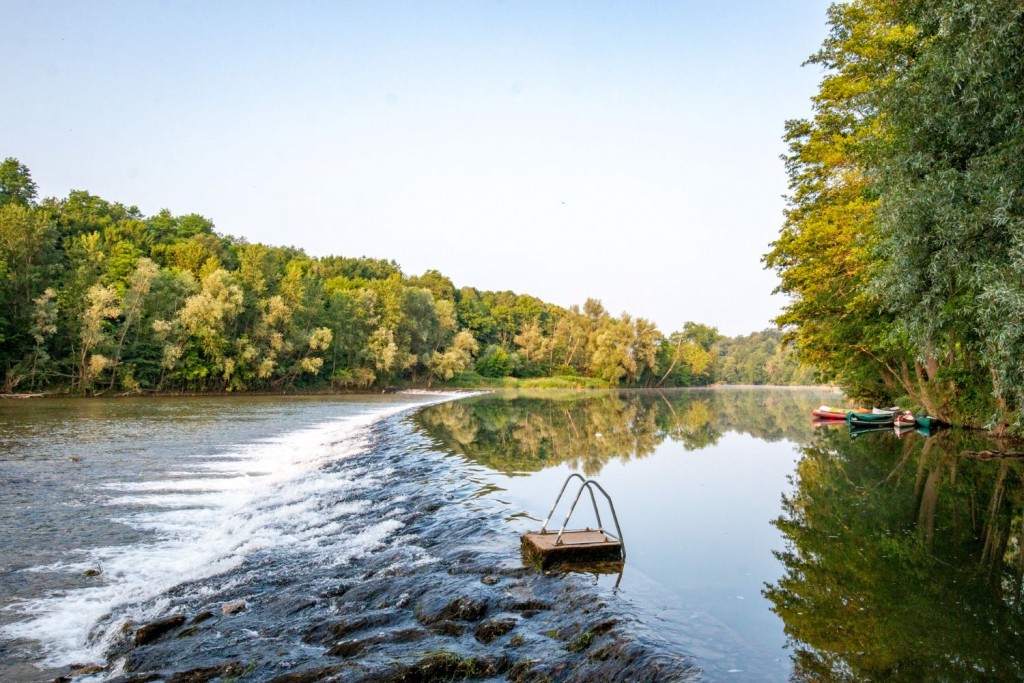
The Kolpa River marks the natural border between Slovenia and Croatia – and it’s one of the warmest rivers in Slovenia.
Vila Sredgora on the ruins of a Kočevar village
To visit Vila Sredgora, you will need to push your pedals hard. From Semič, almost 600 meters of ascent on 11 kilometers of mostly macadam road awaits, but it is worth the effort. After cycling under Mirna gora, through the remote village of Planina and across an idyllic meadow near Ponikve, we are greeted by Vila Sredgora, a sustainable and prestigiously, yet very tastefully (the main building elements are stone, wood and iron) furnished house, which the Ninič family built on the ruins of their father’s house in the ruined village.
It can accommodate eight guests in four rooms, who will, we hope, spend more time in the surroundings of the house than in the rooms, in the relaxing bathtub, in the herb garden or in the vast forests … Ehm, can we spend another night in Bela Krajina?
- The view of Vila Sredgora after a 600-metre climb: stone, wood and perfect silence in the middle of the Kočevje forests.
- And the inside doesn’t disappoint either.
- Wouldn’t mind work trips like this every week.

 Experiences
Experiences Destinations
Destinations Accommodation
Accommodation
